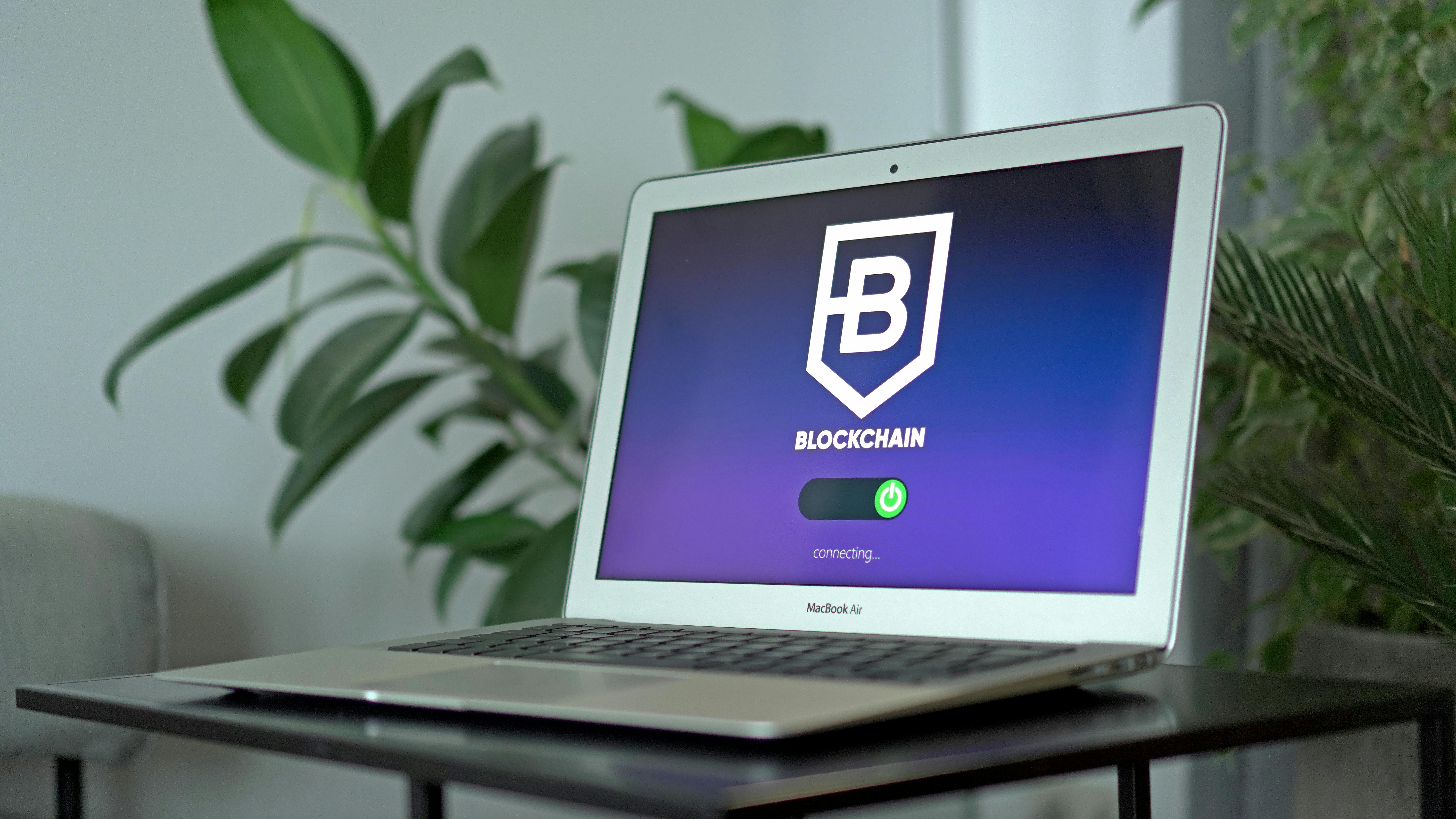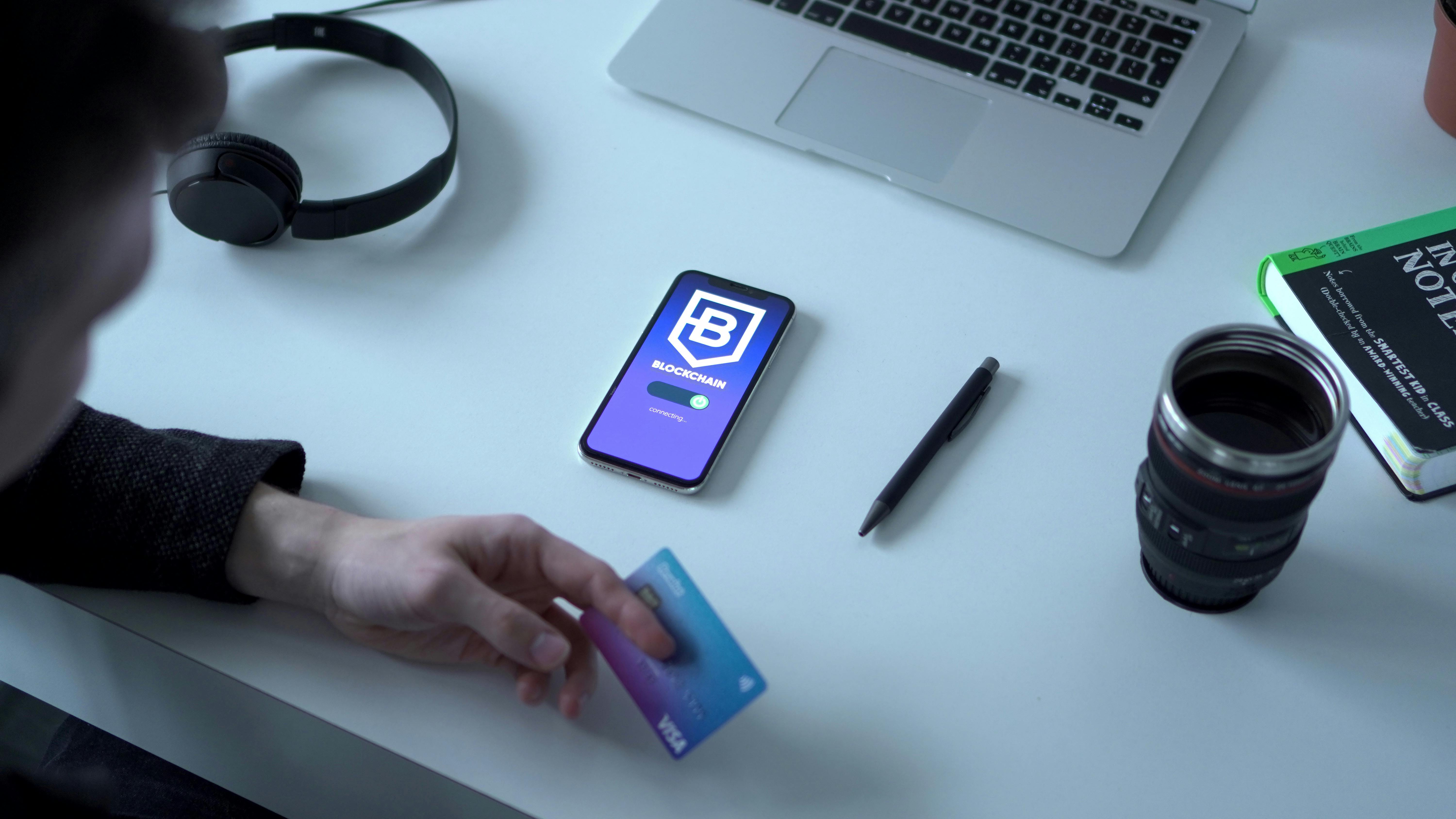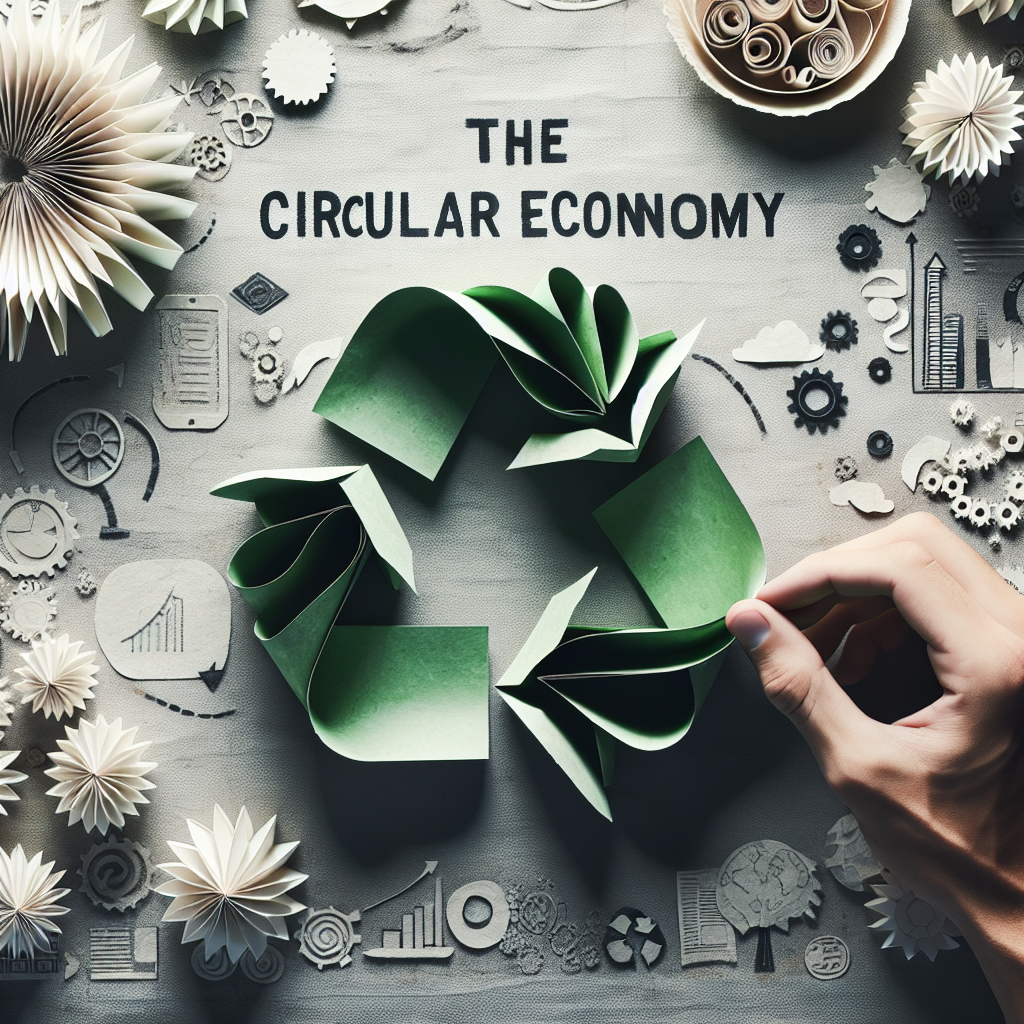Are you interested in making investments that will not only benefit your financial portfolio but also have a positive impact on the environment? Look no further than the circular economy. In this approach, resources are used and reused efficiently, minimizing waste and maximizing the value of products and materials. Investing in the circular economy can provide not only sustainable returns for your investment, but also contribute to the creation of a more sustainable and resilient future for our planet.

Understanding the Circular Economy
Definition of the Circular Economy
The circular economy is an economic system that aims to minimize waste and resource consumption by keeping resources in use for as long as possible and extracting maximum value from them. Unlike the traditional linear economy, which follows a “take-make-dispose” model, the circular economy promotes the ideas of recycling, reusing, and repairing materials to create a closed-loop system where waste is seen as a valuable resource.
Advantages of the Circular Economy
The circular economy presents numerous advantages. First and foremost, it helps reduce waste and pollution, leading to improved environmental sustainability. By keeping resources in use for longer, it reduces the need for raw material extraction and minimizes greenhouse gas emissions. Additionally, the circular economy promotes innovation and the development of new business models, creating opportunities for job creation and economic growth. It also enhances resource security, reducing reliance on scarce resources and lowering the risk of supply chain disruptions.
Challenges of the Circular Economy
While the circular economy offers many benefits, there are also challenges to consider. One of the main challenges is transforming the traditional linear economy into a circular one. This requires significant changes in production processes, consumer behavior, and business practices. Adapting to circularity can also involve significant upfront investments, which may pose financial challenges for businesses. Additionally, the circular economy relies on effective waste management and recycling systems, which may vary in their availability and effectiveness across different regions.
Identifying Investment Opportunities
Types of Circular Economy Investments
When looking to invest in the circular economy, there are various types of opportunities to consider. These include investing in companies that manufacture or provide circular products and services, such as those involved in recycling, renewable energy, waste management, sustainable packaging, and shared economy platforms. Another type of investment is in companies that develop and supply technologies and innovations to support the circular economy. Such technologies may include advanced recycling systems, resource tracking software, and renewable energy solutions.
Studying Market Trends and Demands
To identify the most promising investment opportunities in the circular economy, it is crucial to study market trends and demands. Look for sectors and industries that are experiencing growth due to the adoption of circular practices. Consider the demand for renewable energy solutions, the push for sustainable packaging, and the increasing popularity of sharing economy platforms. Keep an eye on regulatory changes that may promote circularity and research emerging technologies that have the potential to disrupt traditional industries.

Investment Strategies for the Circular Economy
Diversification of Investments
Diversification is a key strategy when investing in the circular economy. By spreading investments across different sectors and companies, you can reduce risk and capture potential returns from a range of opportunities. Consider investing in various sectors, such as renewable energy, waste management, and sustainable packaging, to ensure a well-rounded and balanced portfolio. Diversification can help mitigate the inherent risks associated with specific industries while maximizing the potential for sustainable returns.
Long-term vs. Short-term Investments
The circular economy offers opportunities for both long-term and short-term investments. Long-term investments involve holding assets or securities for an extended period, allowing for potential growth and compounding returns. Such investments align with the long-term nature of the circular economy, as it takes time for businesses and industries to transition to circular practices fully. However, short-term investments can also be profitable, especially when taking advantage of market trends, technological advancements, or regulatory changes. It is essential to consider your financial goals and risk tolerance when deciding between long-term and short-term investment strategies.
Sustainable Investing in the Circular Economy
Socially Responsible Investing (SRI)
Socially responsible investing (SRI) is a popular approach to investing in the circular economy. It involves selecting investments that align with your personal values and beliefs while considering their environmental, social, and governance (ESG) impact. In the context of the circular economy, SRI would involve investing in companies that prioritize sustainable practices, resource efficiency, and social responsibility. SRI offers the opportunity to generate both financial returns and positive societal and environmental change.
Impact Investing
Impact investing goes a step further than SRI by intentionally seeking investments that generate measurable positive social or environmental impact alongside financial returns. Impact investors aim to drive systemic change and address urgent global challenges. In the circular economy, impact investing may involve supporting innovative startups that develop disruptive technologies, investing in projects that promote waste reduction and resource efficiency, or funding initiatives that drive circularity in underserved communities. Impact investing allows individuals to actively contribute to creating a more sustainable and circular future.

Investment Sectors in the Circular Economy
Renewable Energy
Investing in renewable energy plays a vital role in the circular economy. Renewable energy sources, such as solar, wind, and hydro, reduce dependency on fossil fuels and contribute to the decarbonization of our energy systems. Companies involved in the production, distribution, and installation of renewable energy technologies offer attractive investment opportunities. As the world shifts towards renewable energy, the sector presents high-growth potential and the possibility of sustainable returns.
Waste Management and Recycling
The waste management and recycling sector is a fundamental part of the circular economy. Investing in companies that specialize in waste management, recycling facilities, or waste-to-energy projects can contribute to a more sustainable and efficient use of resources. The increasing demand for innovative recycling technologies and the growing awareness of waste reduction create significant investment opportunities in this sector.
Sustainable Packaging
Investing in sustainable packaging is another promising sector within the circular economy. As consumers and businesses become more conscious of the environmental impact of packaging waste, the demand for sustainable packaging solutions is on the rise. Investing in companies that develop and produce eco-friendly packaging materials, such as bioplastics or compostable packaging, can be financially lucrative while supporting the shift towards a circular model.
Shared Economy Platforms
Shared economy platforms, also known as collaborative consumption platforms, provide opportunities for circular economy investments. These platforms connect individuals and businesses to share resources, products, or services, thus maximizing the utilization of existing assets and reducing waste. Investing in such platforms can contribute to a more efficient use of resources while capitalizing on the growing popularity of the sharing economy.
Repair and Refurbishment Services
Investing in companies that provide repair and refurbishment services is another promising avenue within the circular economy. Repairing and refurbishing products extend their lifespan and reduce the need for new production. As the demand for repair services increases and consumers seek sustainable alternatives to buying new, investing in companies that offer repair, remanufacturing, or refurbishment services can offer attractive returns.
Risks and Considerations
Market Volatility and Uncertainty
As with any investment, the circular economy carries risks, including market volatility and uncertainty. Emerging industries and technologies within the circular economy may face challenges in terms of market adoption and scalability. It is important to carefully evaluate investment opportunities, diversify your portfolio, and be prepared for potential fluctuations in value. Consider investing for the long term to mitigate short-term market fluctuations.
Regulatory and Policy Risks
Regulatory and policy risks can impact investments in the circular economy. Changes in environmental regulations, tax incentives, or waste management policies can affect the profitability and viability of certain investments. Stay informed about policy developments and assess the potential impact on your investments. Consider investing in companies with robust sustainability strategies and those positioned to adapt to regulatory changes effectively.
Technological Advancements and Disruptions
The circular economy relies heavily on technological advancements and innovations. While these advancements offer significant growth opportunities, they also come with risks. Investing in technologies that ultimately become obsolete or get surpassed by more efficient alternatives can lead to financial losses. Stay informed about technological developments relevant to your investments and consider the potential risks associated with technology disruption.
Environmental and Social Risks
Investing in the circular economy requires careful consideration of environmental and social risks. Some investments may face reputational risks if they do not adhere to sustainable practices or have a negative impact on local communities. Assess the environmental and social impact of potential investments to ensure alignment with your values and beliefs. Look for companies with strong corporate social responsibility (CSR) practices and those that prioritize environmental stewardship.
Prominent Circular Economy Investment Funds
Fund A – Description and Investment Focus
Fund A is a leading circular economy investment fund focused on renewable energy and sustainable technology. It actively invests in companies developing innovative renewable energy solutions, such as solar and wind power, as well as those pioneering efficient resource management technologies. Fund A’s investment strategy aims to drive both financial returns and positive environmental impact.
Fund B – Description and Investment Focus
Fund B specializes in waste management and recycling investments. It focuses on companies involved in advanced recycling technologies, waste treatment facilities, and waste-to-energy projects. Fund B’s investment portfolio includes businesses that contribute to waste reduction and resource optimization, capitalizing on the growing need for sustainable waste management solutions.
Fund C – Description and Investment Focus
Fund C is dedicated to sustainable packaging investments. It invests in companies that develop and produce eco-friendly packaging materials, such as biodegradable and compostable alternatives. Fund C’s investment strategy aligns with the circular economy’s principles of reducing waste and promoting resource efficiency through innovative packaging solutions.
Key Factors for Evaluating Circular Economy Investments
Financial Performance and Returns
Assessing the financial performance and potential returns of circular economy investments is crucial. Look for companies with solid financial records, positive growth indicators, and a clear business strategy. Analyze historical financial statements, evaluate projected earnings, and consider factors that may impact future profitability, such as industry competition and market demand.
Environmental and Social Impact
Evaluating the environmental and social impact of potential investments is essential for aligning your investments with sustainable values. Consider the carbon footprint, waste reduction potential, and resource efficiency of companies in your investment portfolio. Look for businesses committed to social responsibility, fair labor practices, and diversity and inclusion. Engage with companies and funds that disclose their sustainability performance and results.
Management and Governance
Assessing the management and governance practices of companies you invest in is vital. Look for companies with experienced management teams, strong governance structures, and transparent decision-making processes. Evaluate their track record in implementing sustainable practices, managing risks, and responding to stakeholder concerns. Strong management and governance help ensure the long-term success and sustainability of your investments.
Scalability and Growth Potential
Consider the scalability and growth potential of investments in the circular economy. Look for companies that operate in expanding markets or industries and have innovative solutions with broad market appeal. Assess the potential for market adoption, competition, and regulatory support. Investments with the potential for scalability and growth have a higher likelihood of delivering sustainable returns over the long term.
Alignment with Personal Values and Beliefs
Investing in the circular economy offers the opportunity to align your investments with your personal values and beliefs. Consider investing in companies that prioritize environmental sustainability, social responsibility, and ethical practices. Look for investments that actively contribute to positive change and support a more circular and equitable economy. The alignment of your investments with your values can enhance your financial returns and provide a sense of purpose.
Steps to Start Investing in the Circular Economy
Assessing Personal Financial Goals and Risk Tolerance
Before entering the circular economy investment space, assess your personal financial goals and risk tolerance. Determine your investment horizon, liquidity needs, and desired returns. Consider whether you are comfortable with the potential risks associated with investing in emerging sectors and technologies. Establish clear investment objectives and align them with your overall financial plan.
Building a Diverse Investment Portfolio
Building a diverse investment portfolio is essential for mitigating risk and capturing potential returns. Allocate your investments across different sectors and companies within the circular economy. Consider a mix of long-term and short-term investments to balance your risk exposure. Diversification helps protect your portfolio from the inherent uncertainties and fluctuations of specific industries or markets.
Researching and Selecting Investment Opportunities
Thoroughly research and analyze potential investment opportunities in the circular economy. Stay informed about market trends, emerging technologies, and regulatory changes. Consider partnering with a financial advisor or investment professional who specializes in sustainable investing and circular economy opportunities. Conduct due diligence on potential investments, reviewing financial statements, sustainability reports, and market projections.
Monitoring and Reviewing Investment Performance
Once you have invested in the circular economy, regularly monitor and review your investment performance. Stay updated on the financial and operational performance of your investments. Assess their environmental and social impact through available reports and disclosures. Evaluate whether your investments continue to align with your financial goals and values. Make adjustments to your investment portfolio as needed to optimize returns and manage risk.
Consider Seeking Professional Advice
Investing in the circular economy can be complex, and navigating the various investment opportunities and risks requires expertise. Consider seeking professional advice from financial advisors or investment specialists who specialize in sustainable investing. They can provide guidance on building a well-rounded portfolio, identifying suitable investment opportunities, and managing risk. Working with professionals can help you make informed decisions and align your investments with your personal financial goals and values.
Conclusion
Investing in the circular economy offers the opportunity to generate sustainable returns while contributing to a more environmentally responsible and resource-efficient future. By understanding the principles and advantages of the circular economy, identifying investment sectors and opportunities, and evaluating key factors, you can make informed investment decisions. Diversifying your portfolio, considering long-term and short-term strategies, and aligning your investments with your personal values are crucial steps to take. Whether through impact investing, sustainable funds, or direct investments, joining the circular economy investment movement can create a positive impact while potentially generating financial rewards. Start your journey toward investing in the circular economy today and be part of the solution for a more sustainable world.
